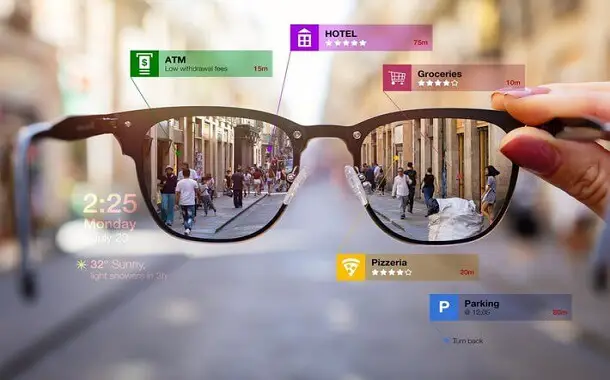The Real Google Glasses Price
Last Updated on February 26, 2024
Written by CPA Alec Pow | Content Reviewed by ![]() CFA Alexander Popinker
CFA Alexander Popinker
Google Glasses, the pioneering wearable technology that promised to revolutionize the way we interact with the digital world, have been a topic of fascination for tech enthusiasts and everyday consumers alike.
As one of the first mainstream augmented reality (AR) devices, Google Glasses offer a unique blend of cutting-edge features and futuristic design. However, understanding the pricing structure of this innovative product is crucial for those considering an investment.
In this article, we’ll delve deep into the cost of Google Glasses, exploring the factors that influence their price, analyzing the value proposition, and providing a comprehensive buying guide to help you make an informed purchase decision.
Highlights
- The latest Google Glass Enterprise Edition 2 model retails for $999 and is available directly from the Google Store and authorized resellers.
- The discontinued Google Glass Explorer Edition for consumers is harder to find new, but pre-owned units may be available on third-party marketplaces for $300 to $800.
- Advanced hardware, software, and AI technology, combined with limited competition, contribute to the premium pricing of Google Glasses.
- Explore official channels, authorized resellers, and reputable third-party sources to purchase Google Glasses.
- Look for bulk discounts, promotional offers, and negotiated enterprise pricing to score the best deals.
- Compare Google Glasses to competing AR glasses to determine the best value and fit for your budget and requirements.
- Account for additional costs like accessories, software integrations, and developer resources when budgeting for Google Glasses deployment.
- Consult user reviews, case studies, and industry feedback to gauge real-world experiences and determine if Google Glasses offer a satisfactory return on investment.
The Real Google Glasses Price
Google Glasses are currently available in the Enterprise Edition 2 model, primarily targeted at businesses and industrial applications. This latest generation of Google Glasses retails for around $999 and can be purchased directly from the Google Store website.
For consumers interested in the original consumer-focused version, the Google Glass Explorer Edition, finding new units has become increasingly difficult.
Google discontinued this model in 2015 due to limited demand and other challenges. However, some third-party sellers and online marketplaces may still have pre-owned or refurbished Explorer Edition units available at varying prices, typically ranging from $300 to $800 depending on condition and included accessories.
Features that Justify the Cost
To fully appreciate the pricing of Google Glasses, it’s essential to understand the cutting-edge features and benefits they offer. These innovative AR glasses seamlessly integrate digital information into your field of view, providing a hands-free and immersive experience.
With voice commands, gesture recognition, and a built-in camera, Google Glasses empower users to capture photos, record videos, access navigation, and receive real-time notifications without ever reaching for their smartphones.
The current Enterprise Edition 2 model boasts enhanced capabilities, including improved camera quality, longer battery life, faster processor performance, and better voice recognition accuracy compared to previous versions.
These advancements in hardware and software help justify the premium price point for businesses seeking a robust and reliable AR solution.
Factors Influencing the Price of Google Glasses
 Several factors contribute to the pricing of Google Glasses, including the cost of research and development, advanced hardware components, and the integration of cutting-edge software and AI technology.
Several factors contribute to the pricing of Google Glasses, including the cost of research and development, advanced hardware components, and the integration of cutting-edge software and AI technology.
Additionally, the demand for such a unique and innovative product plays a significant role in determining its market price. As one of the few mainstream AR glasses available, Google Glasses face limited competition, allowing them to command a premium price point.
Furthermore, the target audience also impacts pricing. The Enterprise Edition 2 is designed for professional and industrial use cases, justifying a higher cost to cater to the more demanding requirements of businesses.
In contrast, the discontinued Explorer Edition was aimed at general consumers and was priced more affordably to appeal to a broader market.
Where to Buy Google Glasses
For those interested in purchasing the latest Enterprise Edition 2 model, the official Google Store (store.google.com) is the primary source for buying the glasses directly from the manufacturer.
Google also partners with select authorized resellers and technology retailers who may offer the Enterprise Edition through their online and physical stores.
Consumers seeking the discontinued Explorer Edition may have better luck exploring various third-party marketplaces, such as eBay or Swappa, where individuals and smaller retailers may list pre-owned or refurbished units for sale.
However, it’s essential to exercise caution when purchasing from these sources, as warranty coverage and support may be limited or non-existent.
Scoring the Best Deals and Discounts
While Google Glasses command a premium price, savvy shoppers can still find ways to save. For the Enterprise Edition 2, businesses may be able to negotiate bulk discounts or enterprise pricing directly with Google, especially for larger deployments.
Additionally, Google periodically offers promotional discounts and special offers, particularly during major shopping events like Black Friday and Cyber Monday.
For those considering pre-owned or refurbished Explorer Edition units from third-party sources, factors like condition, included accessories, and seller reputation can significantly impact the price. Thorough research and comparison shopping across multiple listings can help identify the best deals and discounts available.
Google Glasses vs its Competition
While Google Glasses are among the most advanced and widely recognized AR glasses on the market, they face competition from other players in the wearable tech space.
You might also like our articles on the cost of Ocumetics Bionic Lens and Microsoft HoloLens.
Competitors like Microsoft HoloLens, Magic Leap, and Vuzix offer their own AR glasses at varying price points. Conducting a thorough price and feature comparison can help potential buyers determine if Google Glasses truly offer the best value for their specific needs and budget.
It’s worth noting that some competing AR glasses may offer more affordable entry-level options, making them more accessible to consumers and small businesses with limited resources.
However, these lower-priced alternatives may also have more limited capabilities compared to the robust enterprise-grade features of the Google Glass Enterprise Edition 2.
Factoring in the Cost of Accessories and Applications
Beyond the initial purchase price of Google Glasses, it’s important to consider the potential costs of accessories and compatible applications.
While Google Glasses come equipped with a basic set of features, users may want to invest in additional accessories, such as prescription lenses, protective cases, external batteries, or specialized mounts and adapters, to enhance their overall experience and cater to specific use cases.
Furthermore, certain applications and software may require separate purchases or subscription fees to unlock their full potential.
Businesses may need to budget for enterprise-level software integrations, data management solutions, and developer resources to build custom applications tailored to their operational needs.
User Reviews and Feedback
Before making a significant investment in Google Glasses, it’s wise to consult user reviews and feedback. Online forums, tech blogs, and social media platforms can provide valuable insights into the real-world experiences of Google Glasses owners.
These firsthand accounts can help potential buyers gauge whether the device truly delivers on its promises and offers a satisfactory return on investment.
For the Enterprise Edition 2, seeking out case studies, testimonials, and industry reviews from businesses that have already deployed the technology can provide valuable perspective on the practical value, reliability, and return on investment (ROI) achieved through the use of Google Glasses in professional environments.
Final Words
Ultimately, the decision to invest in Google Glasses will depend on an individual’s or business’s specific needs, budget, and willingness to embrace cutting-edge technology.
For enterprises and professionals seeking a robust and reliable AR solution, the $999 price tag of the Enterprise Edition 2 may represent a worthwhile investment, especially when considering the potential productivity gains, operational efficiencies, and competitive advantages it can provide.
For general consumers interested in experiencing AR through Google Glasses, the options have become more limited. While the discontinued Explorer Edition can still be found through third-party sellers and online marketplaces, securing a well-maintained unit at a reasonable price may prove challenging.
As the technology continues to evolve and become more mainstream, consumer-focused AR glasses from Google or other manufacturers may become more accessible and affordable in the future.
Frequently Asked Questions
Why did Google Glass fail?
Google Glass faced several challenges that ultimately led to its failure. The primary reasons include privacy concerns, design flaws, limited functionality, and high pricing.
Privacy was a significant issue, as the built-in camera raised concerns about surreptitious recording and invasion of privacy. The design was also criticized for being awkward and unfashionable, making it difficult for Google Glass to gain widespread adoption.
Additionally, the limited set of features and apps available at launch did not justify the high price tag, leading to a perception that the device did not offer enough value for the cost.
What Google Glass can do
Google Glasses offer a range of advanced features and capabilities. With their augmented reality (AR) technology, they can seamlessly integrate digital information into the user’s field of view, providing hands-free access to various functions.
Users can take photos and videos, access navigation and real-time directions, receive notifications and reminders, and even conduct voice searches and access online information without reaching for their phones.
Additionally, Google Glasses can recognize objects, translate languages, and provide contextual information about the user’s surroundings.
Are Google Glasses real?
Yes, Google Glasses are a real product developed and manufactured by Google. First introduced as a concept in 2012, Google Glasses are a wearable technology that combines augmented reality (AR) with a head-mounted display.
While the initial consumer-facing version (Google Glass Explorer Edition) faced challenges and was discontinued, Google has since focused on developing enterprise-level versions of the device.
The latest iteration, the Google Glass Enterprise Edition 2, is currently available for purchase and targeted towards businesses and industrial applications.


Leave a Reply
Want to join the discussion?Feel free to contribute!